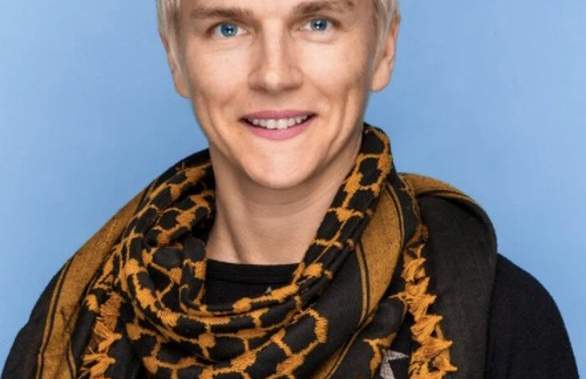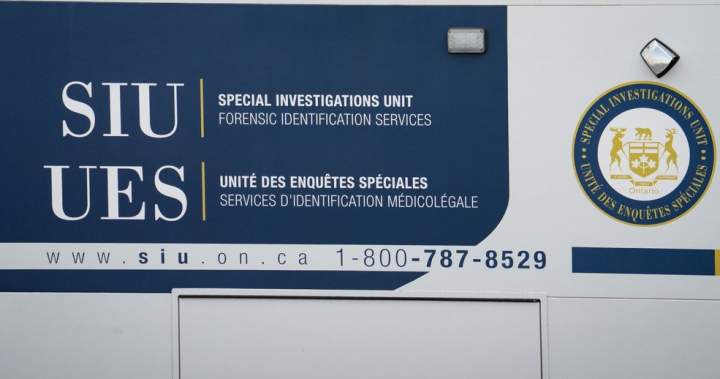Uncategorized
Rural Ontario hospitals offering hefty incentives for traveling doctors amid shortage

As a travelling physician in northern Ontario, Dannica Switzer is acutely aware of the health-care crisis in underserved communities.
“It’s sad to see how much worse things can get,” said Switzer, who works as a locum, filling roles on a temporary basis in rural or remote areas.
Switzer has been in high demand since returning to locum work after quitting her family practice in Wawa, Ont., due to burnout more than two years ago.
Rural and northern Ontario hospitals are competing to recruit locums by offering hefty financial incentives amid a severe shortage of doctors that has plagued the health-care system. The hospitals are vying for doctors from a relatively small pool of locums, often as a way to prevent emergency department closures that have become more common in recent years.
“But the reality is that most people are booked,” Switzer said in a recent interview. “And even if you really want to go help that town out to prevent the closure, you can’t because you’re already working somewhere else.”
Physician Dannica Switzer is shown in this handout photo. THE CANADIAN PRESS/Handout.
DPI
Hospitals’ fierce competition for locum recruitment has triggered concerns about equitable access to health care, with some doctors and experts saying it leaves smaller communities and hospitals vulnerable because they may not have the financial resources needed to entice physicians.
While funding mainly comes from provincial programs, some hospitals top up the pay for locum shifts by tapping into their operating budgets or money that’s available due to vacant staff positions.
But Mike Cotterill, a physician in Wawa and one of Switzer’s former colleagues, said that approach is not ideal.
“If you top up with X dollars, then the next town down the road will top up with X plus, you know, X plus Y,” he said in an interview.

Get weekly health news
Receive the latest medical news and health information delivered to you every Sunday.
“So, it’s a competition that is bad for hospitals and bad for towns. It really shouldn’t have to happen.”
He said the Lady Dunn Health Centre, where he works, has so far avoided having to top up the pay for locums and its “excellent” recruiter has been able to ensure a steady supply of such physicians.
But that’s not the case at some other hospitals.
Timmins and District Hospital is currently offering up to $18,500 for hospitalist medicine locums to work there for one week in August, according to an ad posted on the hospital’s social media page. The North Bay Regional Health Centre pays up to $2,700 per eight-hour shift for emergency medicine locums, according to its website.
Manitoulin Health Centre’s Little Current site offers $250 per hour to physicians who take ER shifts in July and August. The hospital receives around $160 per hour from the Health Ministry for night and weekend shifts and tops up that amount so it can stay “competitive,” using funds from unfilled positions at the hospital, said lead physician Anne McDonald.
The generous pay, flexible scheduling and less administrative work that comes with being a locum may impede some hospitals’ recruitment and retention of full-time doctors, some experts say. The financial incentives for locums, which can also include accommodation, flights, car rentals and other expenses, are unaffordable in the long run, they add.
The goal should be to make permanent positions more appealing so that doctors stay in communities, Switzer said.
“We cannot recruit our way out of a retention crisis,” she said.
Still, doctors agree that locums play a vital role in rural and northern areas of the province.
“We absolutely need the locum and the local program,” said Dr. Anjali Oberai, who works in Wawa alongside Cotterill, her husband.
“We need to support locums but if the support is such that it de-incentivizes working and living in community, yeah, then we have a problem.”
Oberai and Cotterill worked for nearly two years as locum doctors to take advantage of the lifestyle before settling down in Wawa in 1998.
But “the locum landscape was quite different back then,” Oberai said.
They worked mainly during the summer, covering for doctors who were on vacation or other short-term leaves. But locums are now often used to fill vacant positions, and they’ve helped Wawa keep its hospital and primary care centre operational during a worsening physician shortage in the community in recent years.
McDonald, the lead doctor at Manitoulin Health Centre’s Little Current site, said rural doctors are under a lot of pressure, taking care of patients who are often their neighbours, friends or relatives due to physician shortages. Some cannot handle that workload and become locums instead.
“I really think the locum lifestyle is less about the money exactly and more about the lack of burden of ongoing responsibilities that weighs physicians down,” McDonald said.
There are more than 350 physician vacancies in northern communities, according to the Ontario Medical Association. That shortage might get even worse as nearly half of the doctors there are expected to retire in the next five years.
The association always advocates for a system that encourages doctors to provide reliable and continuous care at a specific location, OMA president Zainab Abdurrahman said. But the doctor shortage is so acute that locums have become an essential part of the system.
“It’s not that having a locum means you’re not hiring and you’re not actively trying to recruit,” she said.
Some new medical school graduates want to take time to explore their options as the financial cost and administrative burden of setting up a practice holds them back, she said, while others want to become locums to help underserved communities.
While financial incentives offered by some hospitals do lead to inequities, they are just a symptom of a larger issue, Abdurrahman said.
“The utilization of these kind of extra incentives is really a reflection of the desperation in the health-care system,” she said. “People are making choices to be competitive because they’re feeling the constraint.”
The Health Ministry says its Rural Emergency Medicine Coverage Investment Fund, which replaced the Temporary Locum Program in April, is helping hospitals improve access to emergency care throughout the year by offering them the flexibility to hire locums and improve their capacity to recruit permanent doctors.
That commitment came out of negotiations between the government and the OMA for a new Physician Services Agreement.
Ministry spokesperson Ema Popovic also pointed to the province’s investments aimed at connecting every Ontarian with a primary care provider by 2029, and efforts to add hundreds of seats in medical schools.
Many doctors say that other incentives, such as improving access to education, more vacation time and less administrative paperwork, are also needed to recruit and retain full-time physicians.
For Switzer, being a locum gives her more control over her schedule but that comes with a cost.
“I have a house, I’m not at it. I have a garden. I’m not there … I miss a lot of moments with my family,” she said.
Uncategorized
Ontario paramedic fired for criticizing Israel on social media hopes to be reinstated

A York Region paramedic says she was looking forward to working in the field again after a six-year union leave, but she was abruptly fired last month over a Facebook comment criticizing Israel’s military actions in the Middle East.
“I was about to be back on an ambulance at the end of July,” Katherine Grzejszczak said Thursday in her first public comments about the case.
“I was actually really excited and looking forward to going back out, to being a paramedic.”
Instead, the veteran paramedic said she was fired on June 20 after she criticized Israel’s bombing of Gaza and several countries, and accused the country of starving Palestinian children and killing health-care workers in a comment on a union social media post.
The Regional Municipality of York said last month that officials launched an investigation into an employee’s “concerning comments on social media” on June 19, which led to a dismissal.
“I think it’s extremely unfortunate that we are here,” said Grzejszczak, who served on the Canadian Union of Public Employees Ontario’s executive board.
“It’s not a good time, it has been an extremely emotionally difficult time for me.”
Grzejszczak told reporters that the comment she made was in line with her “professional obligations” as a health worker.
“I love my job as a paramedic because it is first and foremost about preserving life and alleviating suffering,” she said, adding that calling for an end to “a genocide is not a threat to public safety, it is public safety.”

Get breaking National news
For news impacting Canada and around the world, sign up for breaking news alerts delivered directly to you when they happen.
“I really hope that I’m soon reinstated so that I can continue using my life saving skills to serve the residents of York Region,” she said at a news conference, surrounded by supporters and union members.
Her dismissal has triggered concern among free speech advocates and lawyers who say it was a violation of Grzejszczak’s Charter rights.
“Whether one agrees or disagrees with the content of her Facebook post, she was exercising her Charter-protected right to freedom of expression,” Daniel Paré, a senior fellow at the Centre for Free Expression at Toronto Metropolitan University, said at the press conference.
He called on York Region to reinstate Grzejszczak, who has been a paramedic since 2010.
“She is to be judged on whether she meets her professional standards of care, not her political beliefs,” Paré said. “And let’s be clear, there has been no suggestion that Katherine’s political beliefs have ever resulted in any inappropriate treatment of any patient.”
Reached for comment Thursday, a spokesperson for the Regional Municipality of York forwarded the statement originally issued in June about an employee’s “concerning comments.”
Patrick Casey also said “there is no change from York Region since the matter was initially addressed.”
Krista Laing, the chair of CUPE Ontario Municipal Workers, said the entire process of firing Grzejszczak took less than 48 hours, and alleged there was no proper investigation.
She said the decision sets a precedent that should worry workers across the province, and CUPE will continue to fight for her reinstatement.
The Centre for Free Expression says it has seen an increase in the number of people being penalized for expressing their political views since the start of the Israel-Hamas war.
The latest war in Gaza began with the Hamas-led attack on southern Israel on Oct. 7, 2023, in which militants killed 1,200 people and took roughly 250 hostages.
Gaza’s Health Ministry said earlier this week that the war’s toll among Palestinians had surpassed 60,000. The ministry, which operates under the Hamas government, doesn’t distinguish between militants and civilians in its count, but has said that more than half of the dead are women and children.
The United Nations and other independent experts view its figures as the most reliable count of casualties. Israel has disputed the figures, saying it only targets militants and it blames civilian deaths on Hamas.
–With files from The Associated Press
© 2025 The Canadian Press
Uncategorized
Man shot dead by police inside northern Ontario court, SIU investigating

Ontario’s police watchdog is investigating a report that an officer fatally shot a man inside a courtroom in a remote part of northern Ontario on Thursday.
Kristy Denette, a spokesperson for the Special Investigations Unit, said a team of investigators was heading to the scene in Wapekeka First Nation but more details wouldn’t be available until Friday.
Ontario Provincial Police said late Thursday that an officer from its Sioux Lookout detachment shot an “individual armed with a knife on Wapekeka First Nation” around noon, but did not specify the location.

Get daily National news
Get the day’s top news, political, economic, and current affairs headlines, delivered to your inbox once a day.
“As a result, the armed individual was pronounced deceased at the scene,” OPP said in a news release.
Lawyer Karen Seeley said she heard about the shooting from colleagues who were present at what she described as a makeshift courtroom inside a community centre.
Seeley, a partner at a Dryden, Ont.-based law firm, said witnesses described a person who walked into court and pulled out what appeared to be a knife before an officer shot him.
“It was shocking,” said Seeley, who has been practising law in northern Ontario for many years.
“Nothing like this has ever happened … to my knowledge,” she said, adding that her colleagues and the community are shaken.
The Wapekeka courthouse is described on its website as a fly-in location that provides a small number of court services on limited dates.
Seeley said that court, like many others in northern parts of the province, doesn’t have metal detectors.
© 2025 The Canadian Press
Uncategorized
Toronto’s Old City Hall opens its doors for wedding ceremonies – Toronto

It’s not rare to see the lobby of Toronto City Hall bustling with brides and grooms attempting to shepherd family members up to the wedding chapel, but it is uncommon to see the same thing across Bay Street at Old City Hall where, for the first time in decades, the historic building is opening its doors to host civil weddings.
The city has been trying to find a permanent use for the civic building ever since provincial court services officially vacated the property in the spring. While the future of Old City Hall is being decided, the city has reopened the doors to the public this summer. Each Friday in August, visitors can wander the halls and listen to an audio tour. On select Thursdays, couples can even get married there.
“We’ve been looking for light-touch programming that we can bring in quickly and easily, and that included opening up weddings here again,” said Scott Barrett, the city’s director of key assets and property management. “Recently, we just had the first wedding held in this building in about 40 years, which was really exciting.”
The building can accommodate up to 12 civil weddings daily. Interest has been growing, prompting the city to add more dates throughout August and September.

Get breaking National news
For news impacting Canada and around the world, sign up for breaking news alerts delivered directly to you when they happen.
Samantha Pedwell and her partner, Ian Longo, learned that weddings were being performed in the historic building while picking up their marriage certificate. “We saw they were advertising in the office there, so we decided to just go for it,” said Pedwell.
The grand staircase may be the focal point for many wedding photos to come, but the actual ceremonies are taking place in the former city council chambers, which served as a courtroom when the municipality rented the building out in the late 1960s.
Sitting in the room with its high ceilings and ornate panelling, Barrett said the reception from couples has already been spectacular. “They come in and they’re just in awe of the space, and the scale of the space, and it makes for a really special occasion,” he said.
Barrett said the whole purpose of adding light activations in the building is not only to put it to use, but to take some of the mystery away for the public who pass by the structure. Ahead of their wedding ceremony, Pedwell and Longo admitted they had never set foot inside the 126-year-old building before.
“It’s super exciting,” said Longo. “It’s a great piece of Toronto history. We get to celebrate our love together in a really beautiful place. It’s a great day.”
There’s also the added benefit of the ceremony being cost-effective. The total price for a 30-minute ceremony is $337.95, including HST.
“A lot of people spend a ton of money on venues, but they don’t even get something like this,” said Pedwell. “So we’ll have a photographer come in, we’ll take some photos on the steps, and this is basically all you could ever want from a wedding.”
Both agreed the city should continue offering the service beyond the dates currently up for grabs, but Barrett said that will largely depend on demand.
“What we’re seeing now is a lot of interest,” Barrett said. “If that interest is maintained, then we’ll look at opportunities to add and grow over time, and I think it will remain a wonderful compliment to what’s already happening at city hall.”
© 2025 Global News, a division of Corus Entertainment Inc.
-

 Uncategorized2 months ago
Uncategorized2 months agoAccording to Dior Couture, this taboo fashion accessory is back
-

 Uncategorized2 months ago
Uncategorized2 months agoThese ’90s fashion trends are making a comeback in 2017
-

 Uncategorized2 months ago
Uncategorized2 months agoThe old and New Edition cast comes together to perform
-

 Uncategorized2 months ago
Uncategorized2 months agoUber and Lyft are finally available in all of New York State
-

 Uncategorized2 months ago
Uncategorized2 months agoNew Season 8 Walking Dead trailer flashes forward in time
-

 Uncategorized2 months ago
Uncategorized2 months agoMeet Superman’s grandfather in new trailer for Krypton
-

 Uncategorized2 months ago
Uncategorized2 months ago6 Stunning new co-working spaces around the globe
-

 Uncategorized2 months ago
Uncategorized2 months agoThe final 6 ‘Game of Thrones’ episodes might feel like a full season








